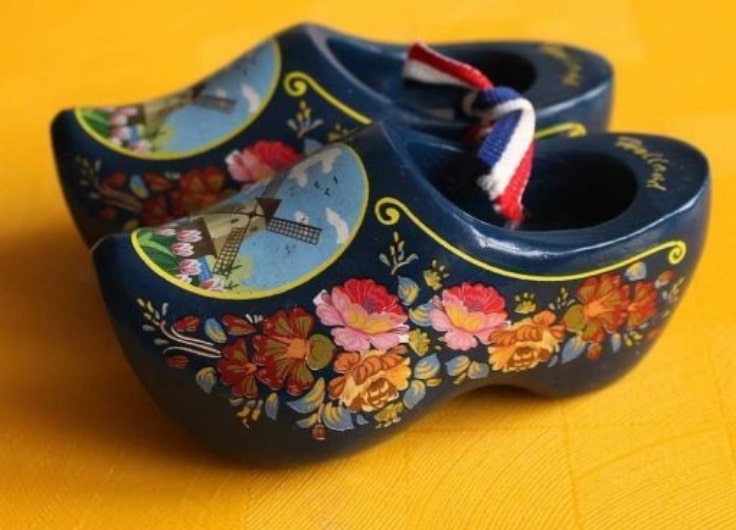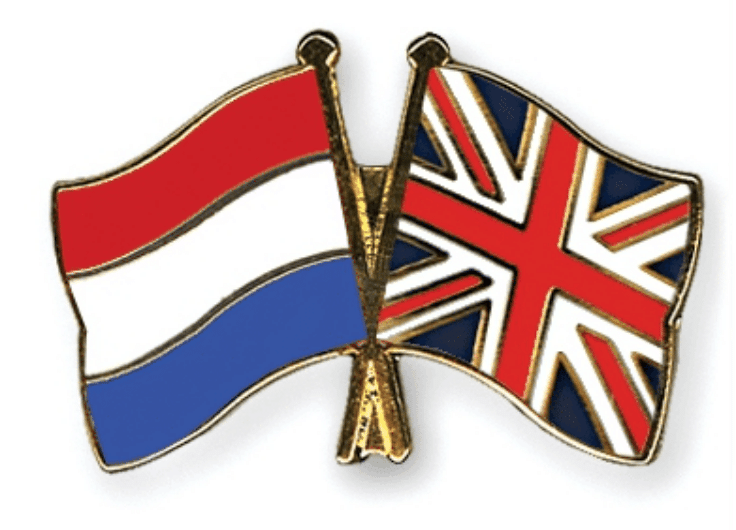The State of Netherlandic Studies in Canada
After the Second World War many Dutch and Flemish emigrated to Canada. In order to integrate quickly, they spoke less and less Dutch and more and more English. Still, the bond with their motherland hasn’t been cut yet, thanks to the academic world. All over the country young people still study the Dutch language and Netherlandic culture at educational and cultural institutions. However, the number of Dutch language programs across Canadian universities has declined since the 1990s.

Perhaps the most appropriate starting point in a discussion of the state of Netherlandic Studies in Canada is the flagship academic organization, CAANS or the Canadian Association for the Advancement of Netherlandic Studies. This organization was officially founded on June 3, 1971 at the ‘Learneds’, Canada’s annual gathering of academic organizations in the Humanities and Social Sciences, which took place, that year, at Memorial University in St. John’s, Newfoundland. Spearheading the initiative was Professor Christopher Levenson who, at the time, taught in the English Department at Carleton University (Ottawa, Ontario). The aim then as now remains the same, and is succinctly stated on its website – “stimulate an awareness of, and interest in, Netherlandic (Dutch, Flemish, and South-African) culture and to facilitate the gathering and dissemination of information in the areas of interest of the organization.”
CAANS was designed with two audiences in mind: the academic world with a broad multidisciplinary interest in all things Netherlandic, and the Netherlandic diaspora dotted throughout Canada’s many provinces. To respond to these two audiences, it is structured, up until today, in the following manner: the overarching CAANS National, which is academically focused, and local chapters for the wider diasporic community found in various urban centres, such as Montreal, Ottawa, Toronto, Calgary and Vancouver.
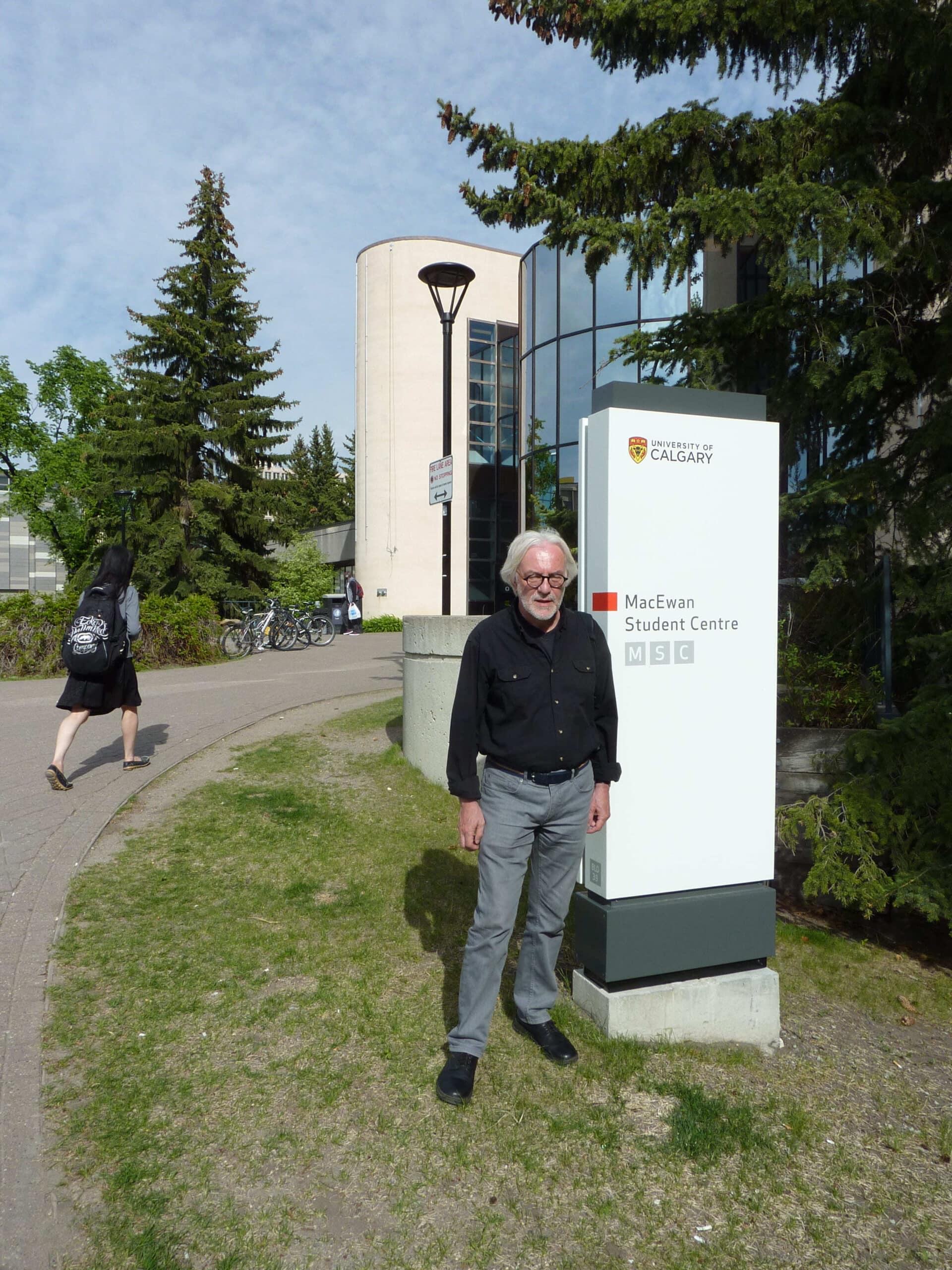 Eric Vlaminck at the University of Calgary
Eric Vlaminck at the University of CalgaryCAANS National is the academic ‘home’ of Canadian scholars, from a myriad of disciplines, whose research focuses on some aspect of Netherlandic Studies, be it linguistic, literary, historical, political, diasporic, post-colonial, art-historical, etc. Since its inception, it has organized a two-day annual academic conference, which includes hosting a high-level keynote speaker with the financial help of the Taalunie, the Nederlands Letterenfonds and the Vlaams Fonds voor de Letteren. Recent keynote speakers include authors such as Eric Vlaminck, and Joke van Leeuwen, journalists such as Geert van Istendael, and scholars such as Jacqueline Bel (Vrije Universiteit Amsterdam, Dutch Literature), Jac Geurts (Radboud Universiteit Nijmegen, History), Peter van Zonneveld (Universiteit Leiden, Dutch Literature), and Kitty Zijlmans (Universiteit Leiden, Art History).
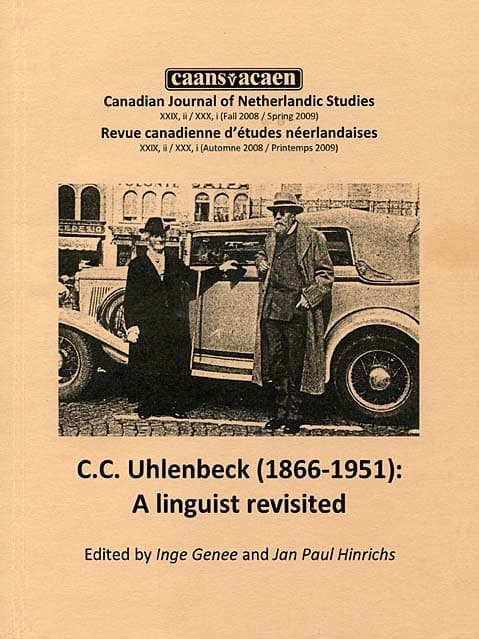 Canadian Journal of Netherlandic Studies
Canadian Journal of Netherlandic StudiesFurthermore, since 1979, CAANS National publishes the peer-reviewed Canadian Journal of Netherlandic Studies or CJNS, of which all issues are now available on-line. The journal publishes the proceedings of the annual academic conference as well as original academic work, either stand-alone or in themed special editions. Two special issues of note, which underscore CAANS’ distinct multidisciplinary focus, are Netherlandic migrations: Of memory and remembering (guest editor: Hendrika Beaulieu) published in 2016, and Islam in the Netherlands: Entering the twenty-first century (guest editor: Maurits S. Berger) published in 2012-2013.
CAANS National is proof that Netherlandic Studies, as an area of study and research, is alive and well in Canada. This being said, however, Canadian universities currently do not appear to have stand-alone Netherlandic Studies programs or departments. However, Dutch language programming is offered at many Canadian universities, from the larger comprehensive and research-oriented to the more boutique and faith-based. Notable examples are the Universities of Toronto and Waterloo, both located in the province of Ontario, which took in large numbers of Dutch and Flemish immigrants following the Second World War. The University of Toronto offers a certificate in the Dutch language through its School of Continuing Education, while Waterloo offers a similar certificate but through its Department of Germanic and Slavic Studies. Both certificates follow the European Framework of Reference, and require the successful completion of at least four levels. Further, in the western provinces, which also have a sizable diasporic presence, the Universities of Winnipeg, Calgary, and Victoria as well as the University of British Columbia in Vancouver offer Dutch Language courses through Extended Learning, Continuing Education or their Departments of Modern Languages and Literatures. Finally, much smaller and specialised faith-based institutions, such as Redeemer College (Ancaster, Ontario) and King’s University (Edmonton, Alberta), offer an experiential study-abroad option in cooperation with the Christian-Reformed Dordt College (Zwolle, the Netherlands). Participating students study the Dutch language, as well as the culture, history and art of the Netherlands.
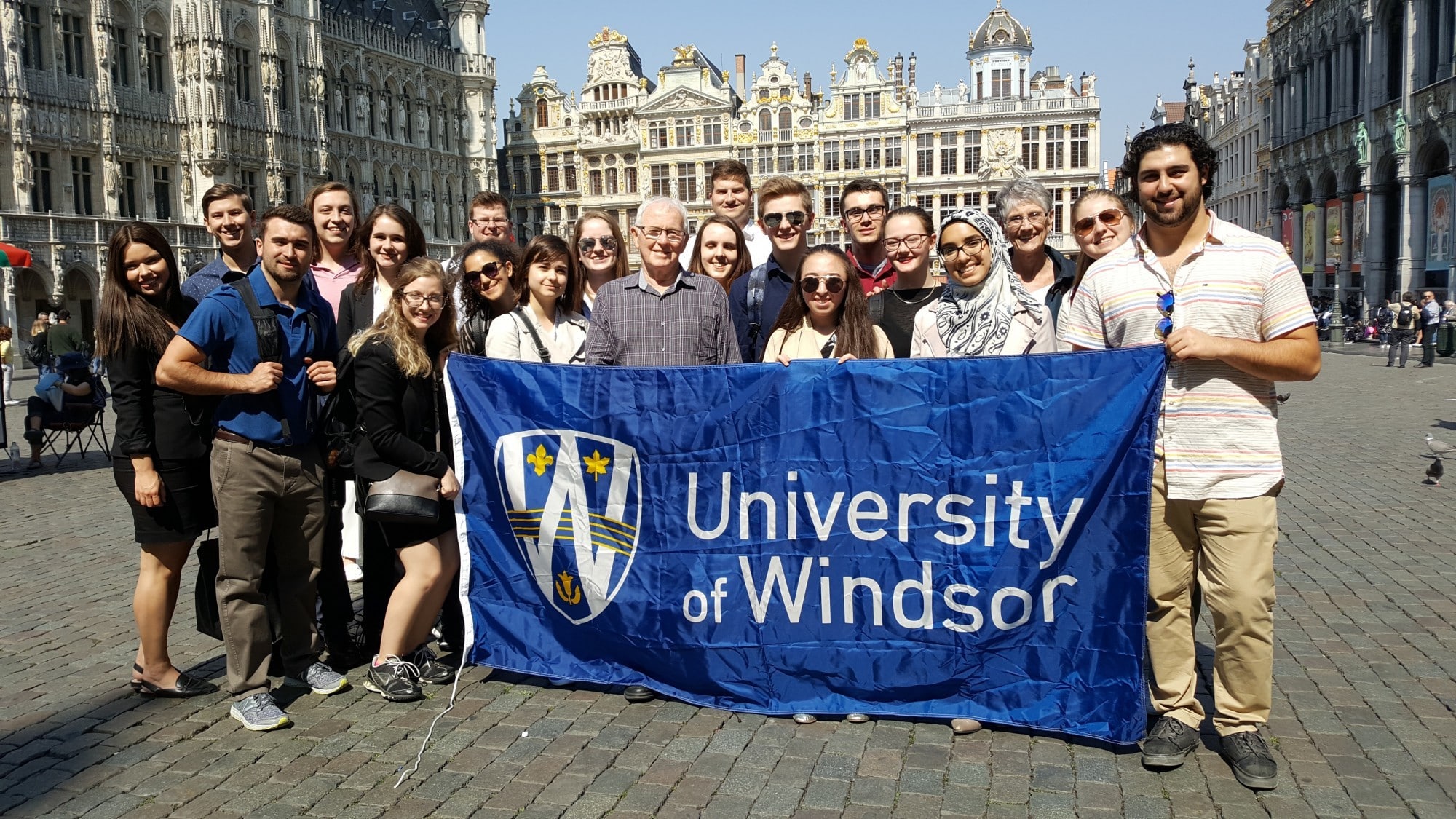 Students of the University of Windsor in Brussels
Students of the University of Windsor in BrusselsNot that long ago, one would find an even larger number of Dutch language programs across Canadian universities, including at smaller schools such as the University of Windsor (Windsor, Ontario), and Brock University (St. Catherines, Ontario). Their numbers as well as the depth of the programming, however, have steadily declined since the 1990s.
 Dutch family on their farm, Cochrane District, Ontario, July 1952
Dutch family on their farm, Cochrane District, Ontario, July 1952© Library and Archives Canada/PA-149609
This trend reflects a simple reality, which could be explained in the following manner.
Firstly, the Netherlandic diasporic community is an older one within the Canadian context of continuously welcoming waves of migration from various areas of the world. The last Netherlandic wave took place in the immediate decades following the Second World War, but has since declined to a trickle. Moreover, anecdotal evidence suggests that many recent immigrants tend to be highly educated and mobile global citizens, who locate in Canada for professional or personal reasons, not linked to past immigration patterns. With respect to the post-World War Two wave, whether Flemish or Dutch, their mindset was to assimilate quickly within the wider Canadian socio-economic and cultural fabric, and to be ‘model immigrants’. In fact, it is well documented that English became the preferred language within the home almost upon arrival in Canada, a point of much pride within the community.
We spoke only English at home […] and we children had to become
fluent as quickly as possible. It was, however,
expected that I, who had had three war-damaged years of
schooling in Holland, would write my occasional letters to
Holland in Dutch.
(Brandis, 2000)
There was, however, another dynamic at play, a socio-linguistic one and linked to the micro-politics of language within the diaspora, that also accounts for the rapid linguistic assimilation of both Netherlandic communities. As explained by both Schryer (1998) for the Dutch community and by Collet (2010a and b) for the Flemish community, migrants, who overwhelmingly spoke regional and class varieties of the Dutch language, often preferred to use English with other Netherlandic migrants as part of a face-saving technique, as English obscured the migrants’ former socioeconomic status held within the ‘old country’, and, in so doing, levelled the playing field in the ‘new country.’
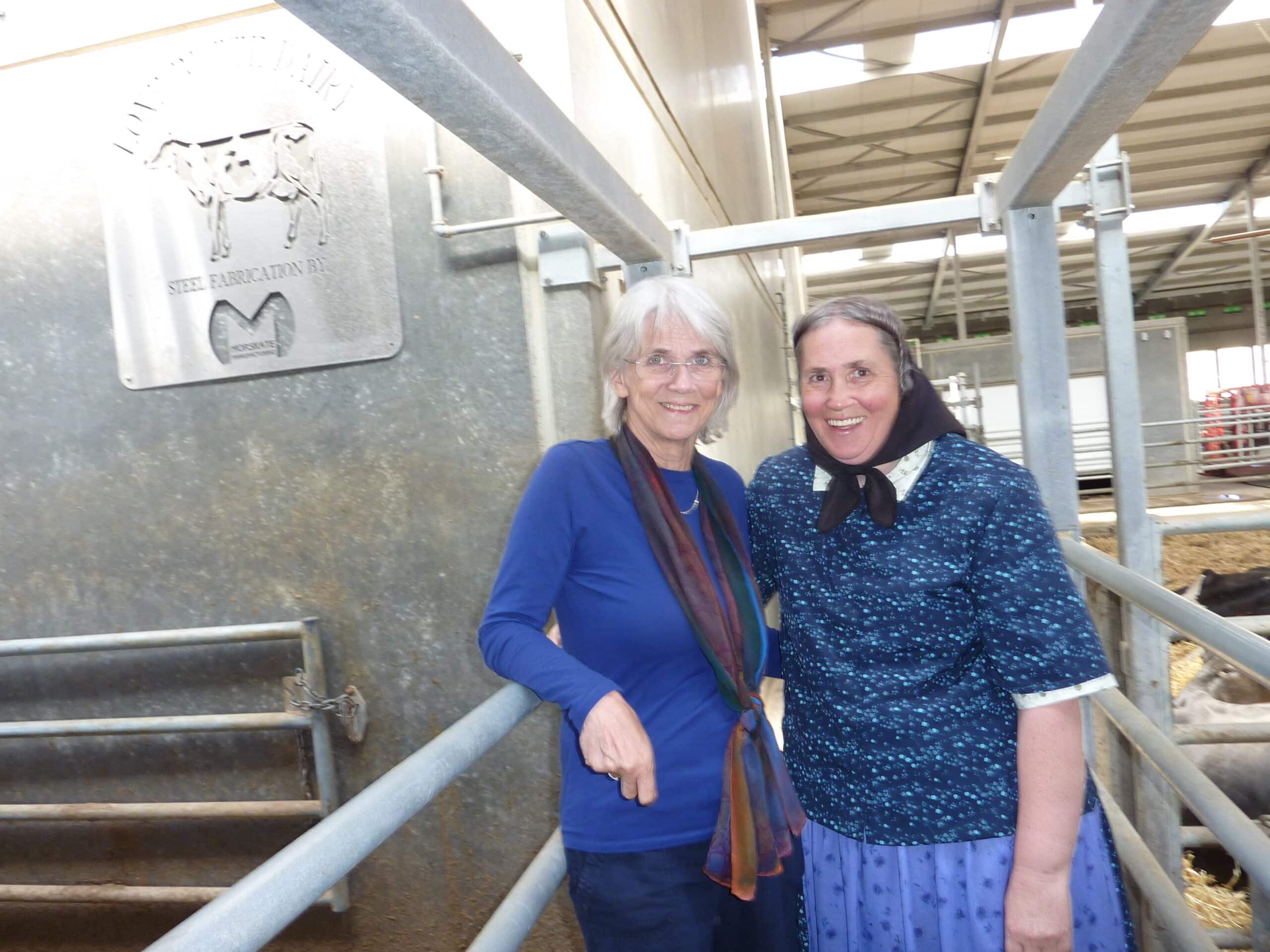 Joke van Leeuwen visiting Hutterites in Canada
Joke van Leeuwen visiting Hutterites in CanadaSilent ethnicity
As a consequence, the community’s shift towards the English language was more often than not concluded within the first generation, and the lukewarm attempts at language transfer to the second generation mostly failed. However, a significant amount of what Schryer (1998: 2) calls ‘silent ethnicity’ remains, in other words an awareness of the conceptual construct of Dutch or Flemish ethnic identity, as well as an affective link to the first generation’s country of origin, as shown by the amount of travel to Belgium or the Netherlands (Collet 2010b). It is this ‘silent ethnicity’ that generates continued interest among the third and fourth generations in their grand-parents’ heritage language. Hence, the continued existence of introductory and intermediate Dutch language courses at various universities in the provinces where the diaspora settled.
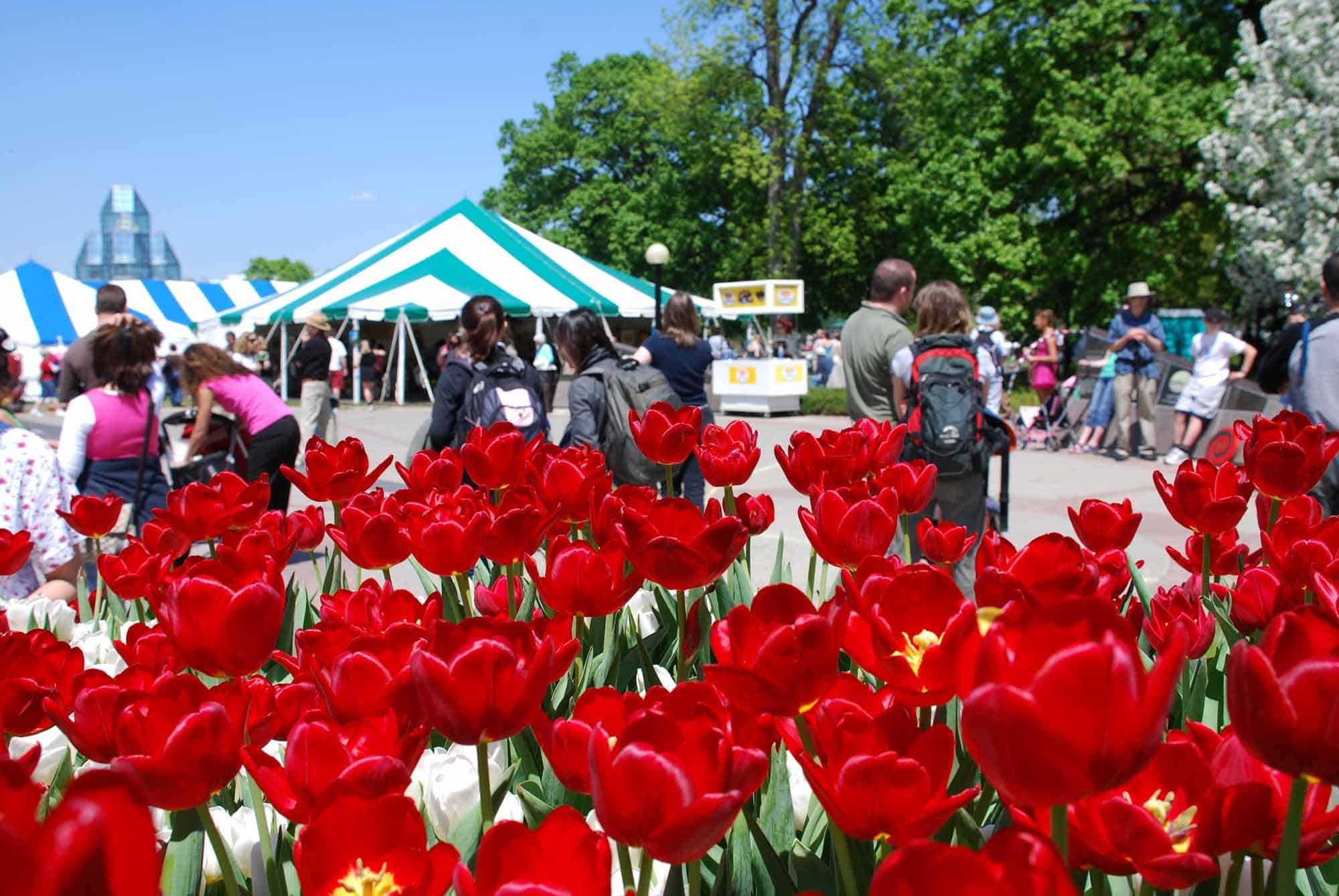 Tulip Festival in Ottawa. The Canadian Tulip Festival is the world's largest tulip festival and originated in 1953.
Tulip Festival in Ottawa. The Canadian Tulip Festival is the world's largest tulip festival and originated in 1953.© Paul Mckinnon | Dreamstime.com
Secondly, the decline in Dutch language programming is also linked to the status of the language within the Canadian mosaic. Indeed, for all intents and purposes, Dutch is a relatively minor language both within the Canadian context and globally. In Canada, Dutch along with other languages linked to post-World War Two European migration, such as Italian and German, have been usurped by languages tied to newer and sometimes much larger waves of immigrants. These include Arabic, Cantonese, Mandarin, Punjabi, Spanish, Urdu, etc. Further, these newer languages on the Canadian scene are global languages, which presently have significant currency in international affairs. Within the Canadian university context, language programming and its attractiveness to students often mirror both immigration patterns and international political dynamics.
 Netherlands Ambassador Dr. J.H. van Roijin and Mrs. van Roijin greeting Dutch immigrants arriving by ship in Montreal, June 1947
Netherlands Ambassador Dr. J.H. van Roijin and Mrs. van Roijin greeting Dutch immigrants arriving by ship in Montreal, June 1947© George Hunter / National Film Board of Canada. Photothèque / Library and Archives Canada / PA-123476
To conclude, interest in academic circles regarding Netherlandic Studies continues. Rather than viewing it as a separate area of study, however, research in this area is found in various disciplines of the academy. To cite but a few current and diverse projects:
. Krystyna Henke (Brock University, St. Catherines, Ontario) researches issues in post 9/11 journalism in the Netherlands;
. Cecile Wilson (Carleton University, Ottawa, Ontario) is completing a multimodal critical discourse analysis of Coornhert’s (1551) and Galle’s (1569) Power of Women series;
. Robert Tiegs (Sheridan College, Greater Toronto Area, Ontario) researches the political and ecological impact of military floods during the Dutch Wars of Independence (1566-1648);
. Tanja Collet (University of Windsor, Windsor, Ontario) examines Flemish diasporic discourse of the first half of the 20th century with respect to language, culture, Flemish nationalism and integration into the wider host society.
Further, and perhaps to state the obvious, research on the Netherlandic countries can be found in comparative research dealing with a host of topics of particular interest to Canada and in which these countries feature prominently. These topics include political issues of federalism and consociationalism, social issues dealing with the legalisation of marijuana, immigration and the rise of populism, agro-economic issues regarding the green house industry, to name but a few.
Finally, we would be remiss if we did not mention the number of study abroad programs between Canada, and the Netherlands and Belgium, including the European Union Study Abroad Program, a joint initiative by the University of Windsor, the University of Western Ontario and the Katholieke Universiteit Leuven, and the Netherlands Field School: Culture, Identity and Migration organised by the University of Guelph (Guelph, Ontario) in Amsterdam and The Hague.
References
BRANDIS, Marianne (2000): Finding Words. A Writer’s Memoir, Penumbra Press.
COLLET, Tanja (2010a): “First-language use, maintenance and transfer: the case of the Flemish community of southwestern Ontario,” Canadian Journal of Netherlandic Studies, 31(1), 5-28.
COLLET, Tanja (2010b): “Heritage language use and maintenance: the case of second-generation Flemish Canadians in southwestern Ontario,” Canadian Journal of Netherlandic Studies, 31(2), 1-20.
GENEE, Inge and Christie NEMETH (2005): “The Dutch language in southern Alberta: an investigation into patterns of minority language shift,” Canadian Journal of Netherlandic Studies, 26(2), 35-59.
SCHRYER, Frans J. (1998): The Netherlandic Presence in Ontario. Pillars, Class and Dutch Ethnicity, Wilfrid Laurier University Press.



